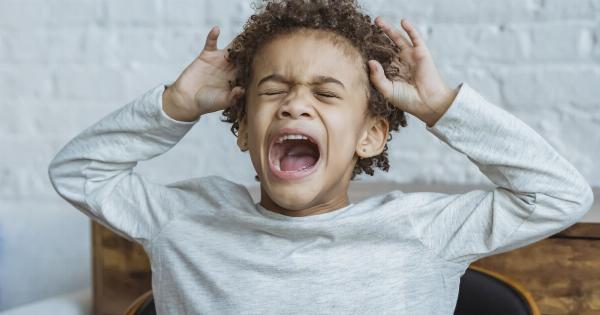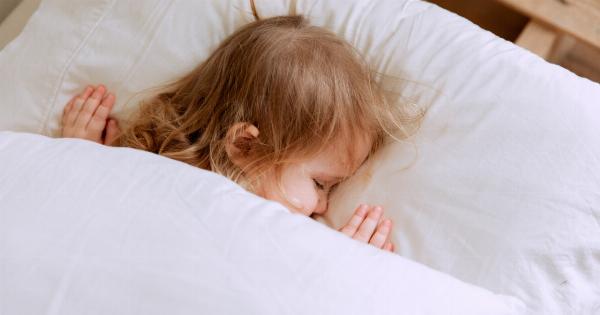Child depression is a serious mental health issue that affects a significant number of young individuals worldwide.
It is characterized by persistent feelings of sadness, loss of interest in activities, changes in appetite or sleep patterns, and a lack of energy. While depression can affect anyone regardless of age, it is particularly concerning when it affects children, as it can have long-lasting effects on their emotional, social, and academic development.
Understanding the Importance of Child Depression Prevention
Preventing child depression is crucial for ensuring the well-being and healthy development of young individuals.
By addressing the risk factors and implementing strategies to promote mental health, we can reduce the prevalence of depression and safeguard children from its adverse consequences.
The Role of Parents and Caregivers
Parents and caregivers play a vital role in preventing child depression. By promoting a nurturing and supportive environment, they can significantly contribute to their child’s mental well-being.
Here are some strategies parents can implement to prevent child depression:.
1. Foster Open Communication
Encourage your child to express their emotions and thoughts freely. Create a safe space where they feel comfortable discussing their feelings without judgment. By fostering open communication, you can better identify any signs of distress early on.
2. Provide Emotional Support
Show empathy and understanding towards your child’s emotions. Provide reassurance and comfort during difficult times. Let them know they are not alone and that you are there to support them unconditionally.
3. Encourage Physical Activity
Regular physical activity has been proven to have a positive impact on mental health. Encourage your child to engage in activities they enjoy, such as playing sports or dancing.
Physical exercise releases endorphins, which can lift their mood and reduce depressive symptoms.
4. Promote Healthy Sleep Habits
Adequate sleep is crucial for emotional well-being. Establish a consistent bedtime routine for your child and ensure they get enough sleep each night. Limit exposure to electronic devices before bed, as they can disrupt sleep patterns.
5. Teach Coping Skills
Equip your child with effective coping strategies to deal with stressors and setbacks. Teach them problem-solving techniques, relaxation exercises, and encourage them to engage in activities they find enjoyable and fulfilling.
6. Maintain a Balanced Lifestyle
Encourage a balanced lifestyle that includes nutritious meals, regular exercise, and sufficient downtime. A balanced lifestyle can significantly contribute to overall mental well-being and reduce the risk of depression.
The Role of Schools and Educators
Schools and educators also have a vital role in preventing child depression. They can implement various strategies within the educational setting to promote mental health and resilience among students:.
1. Implement Social and Emotional Learning Programs
Social and emotional learning (SEL) programs can enhance students’ emotional intelligence, empathy, and interpersonal skills.
These programs teach students how to manage emotions, build positive relationships, and make responsible decisions – all factors that can protect against depression.
2. Foster a Positive School Climate
Creating a supportive and positive school climate is essential for promoting mental health. Schools can implement anti-bullying policies, encourage inclusivity, and provide access to counseling services.
When students feel safe and supported at school, they are less likely to experience depressive symptoms.
3. Educate Students on Mental Health
Increasing mental health literacy among students can reduce stigma and promote early intervention.
Schools can incorporate mental health education into their curriculum, ensuring students have a better understanding of common mental health conditions, including depression.
4. Offer Supportive Peer Relationships
Encourage the development of positive peer relationships within the school community. Peer support can provide a sense of belonging and help buffer against the negative effects of stress.
Schools can facilitate group activities, clubs, or mentoring programs to promote healthy friendships.
The Importance of Play and Leisure
One enjoyable approach to child depression prevention is through play and leisure activities. Play is not only essential for a child’s cognitive and physical development but also plays a significant role in their emotional well-being.
Here’s why play and leisure are important:.
1. Enhances Emotional Regulation
Play provides children with a safe space to explore and express their emotions. Through play, they can learn to regulate their emotions, develop problem-solving skills, and cope with challenging situations.
Moreover, play promotes the release of endorphins, which can uplift their mood.
2. Boosts Self-esteem
Engaging in play and leisure activities allows children to experience success, master new skills, and gain a sense of competence.
Success in play enhances their self-esteem and promotes a positive self-image, acting as a protective factor against depression.
3. Facilitates Social Connections
Play provides opportunities for social interaction and the development of social skills. Whether through pretend play, team sports, or group activities, children can form friendships, practice cooperation, and build a support network.
Social connections are essential for emotional well-being and can help combat feelings of loneliness or isolation.
4. Allows for Creative Expression
In play, children can unleash their creativity and imagination. Creative expression is vital for emotional and mental well-being, as it enables children to express themselves authentically and explore their emotions in a non-threatening way.
5. Reduces Stress and Anxiety
Play serves as an effective stress and anxiety reducer for children. Engaging in enjoyable activities helps children relax, unwind, and temporarily forget about their worries.
Play promotes a positive emotional state, allowing children to experience joy and happiness.
Integrating Play and Leisure into Daily Routine
Now that we understand the importance of play and leisure in preventing child depression, let’s explore some ways to integrate play into a child’s daily routine:.
1. Encourage Unstructured Play
Provide ample time and space for unstructured play. Unstructured play allows children to follow their imagination and interests, fostering creativity and problem-solving skills.
Limit screen time and create opportunities for free play, both indoors and outdoors.
2. Engage in Playful Activities Together
Participate in playful activities with your child. Whether it’s playing board games, building with blocks, or having a dance party, engaging in play together strengthens your bond and increases your child’s happiness and sense of security.
3. Support Participation in Hobbies
Encourage your child to pursue hobbies they enjoy. Hobbies such as painting, playing a musical instrument, or joining a sports team provide a sense of purpose and fulfillment, reducing the risk of depression.
4. Foster Outdoor Play
Outdoor play has numerous benefits for a child’s mental health. Encourage your child to spend time in nature, whether it’s going for a bike ride, playing in the park, or exploring a local trail.
Outdoor play promotes a sense of adventure, curiosity, and physical well-being.
Conclusion
Child depression prevention requires a multifaceted approach involving parents, caregivers, schools, and the integration of play and leisure.
By fostering open communication, providing emotional support, and promoting a balanced lifestyle, parents can contribute significantly to their child’s mental well-being. Schools can implement social and emotional learning programs, foster a positive school climate, and educate students on mental health.
Finally, integrating play and leisure into a child’s daily routine can enhance emotional regulation, boost self-esteem, facilitate social connections, allow for creative expression, and reduce stress and anxiety. Together, these efforts can help prevent child depression and ensure the healthy development of our young individuals.





















